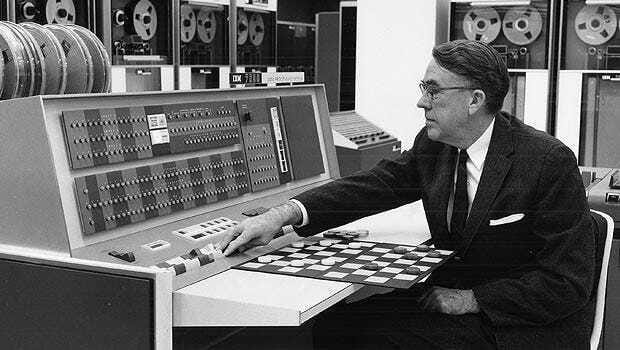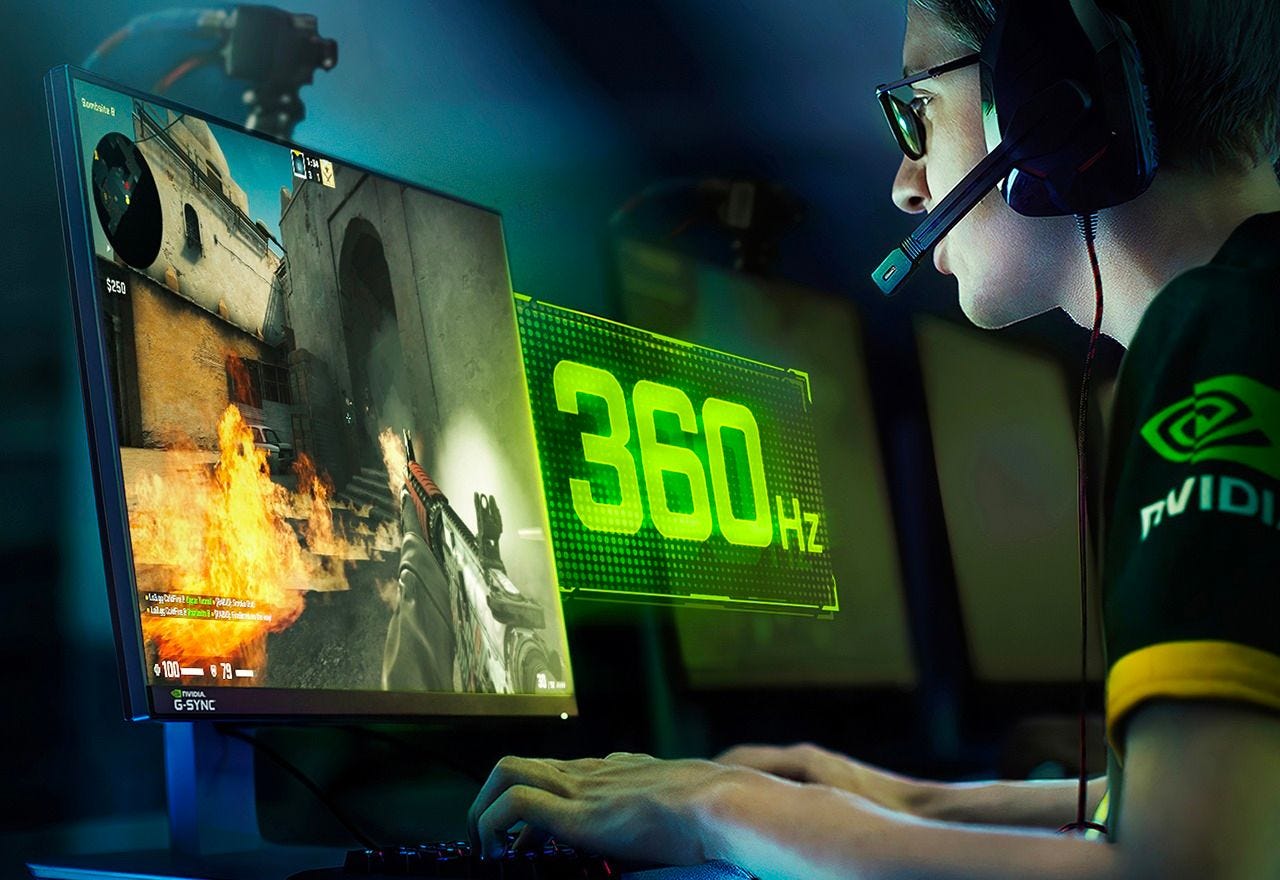AI in GTM & RevOps (1/4): Making $4.4 trillion in Annual Profits
Types of AI and Use cases in GTM
The AI race accelerated with the launch of ChatGPT in November 2022. It was a turning point that made AI solutions mainstream. As of January 2024, alone ChatGPT had over 180 million active users.
Every day another dozen of AI products are launched by AI start-ups or by existing technology companies. The market opportunity is huge as we will see soon.
AI is now everywhere and changing how Go-To-Market (GTM) teams are working. 90% of Marketeers said that AI helps them to work faster and automate mundane tasks. Giving them time to work on activities they like more and generate more revenue. At the same time, the same Marketeers had more work than ever before (HubSpot, 2023). AI is raising the level playing field.
AI allows us to do more with less.
It seems that AI will allow us to do more with less. That is an interesting appeal for GTM teams and shareholders. Missing the AI train is not an option. Companies that adopt AI are outperforming companies that don’t adopt AI. The speed of innovation is unprecedented - so is the speed of adaptation.
In this blog series, we will look at AI’s impact on GTM and RevOps teams. We will start with an overview of AI technologies and the reasons for its adaptation. Later, we will look at what is required to adopt AI and the regulatory landscape. We will look then how leading companies will adopt AI in their GTM teams and what role RevOps will play.
In todays blog, we set the stage by providing a general overview of AI technologies, the history and the reason why GTM are adopting AI (spoiler: it is to make more money).
Table of Contents
A simple AI Overview for GTM team
What is Artificial Intelligence (AI)?
AI are computer system that can perceive, reason, learn, and make decisions to mimic or augment human cognitive abilities.
Short History of AI
ChatGPT made AI mainstream but it was not an overnight success. The first AI program was introduced in 1951 by a team of researcher in Oxford lead by Christopher Strachey. That AI program could play a game of checkers:
Christopher Strachey playing checkers against an AI in 1951.
This shows that AI technology is even older than the internet. Computer scientist were researching AI for a long time.
What allowed major breakthroughs are better graphics processing units (GPUs).
GPUs are needed for AI models like machine learning and deep learning (we will shortly explain those concepts). GPUs existed since a long time. Their main use case was in computer gaming. The GPUs allowed for cool graphics and physics in video games:
GPUs power computer games
In the beginning the GPUs were not strong enough for the AI use cases. With time they eventually got better and better. In a way AI only got so popular right now because of computer gamers! Their demand for better games accelerated the innovation for GPUs.
Thanks to computer gamers, we got now advanced AI technology!
One of the big winners of the AI race is NVIDIA. Their GPUs are powering the AI race. The stock summary below shows you NVIDIAs evaluation over the time when their GPUs were used for gaming and then for AI.
The thing is we are at the beginning of AI technologies as you will find in this blog series. The sky is the limit for NVIDIA’s stock.
NVIDIAs stock as of 31 Jan 2024
Branches of AI
There are different branches of AI, for GTM and RevOps not all of them are relevant. Here is an overview of the most important ones.
Machine Learning
Machine Learning is the foundation of AI. It's all about creating computer programs that can improve by learning from data. For example, a CRM might recommend you to a lead that is “hotter” than others using machine learning techniques.
Within machine learning, there is a subset called Deep Learning. It tries to work like the human brain. It uses artificial neural networks to learn from a lot of data with little human intervention.
In relation, there is also Reinforced Learning. This involves an award for the computer doing if it gets the answer right. In this method the computer program can improve on its own in a given task.
Machine learning and its subset deep learning and reinforced learning are the foundation on which most AI technologies are built.
Natural Language Processing
Natural Language Processing (NLP) lets computers understand and use human language. AI models can read textual data, understand its meaning, write text, and converse with people. Think ChatGPT.
NLP unlocks many use cases:
Sentiment Analysis (Understand sentiment of a text)
Language Translation
Text Summarization
Named Entity Recognition (such as names, businesses, locations)
Question Answering
Information Extraction
Text Classification
Text Generation
Speech Recognition and Voice Assistants
Language Modeling (predict language, spell checking)
Document Analysis and Search
Text-to-Speech and Speech-to-Text Conversion
From this list, you can already imagine that this field is the most used for GTM and RevOps. Most SaaS build AI tools using NLP and most businesses deploy those tools. That is no surprise as language is how we humans communicate.
Computer Vision
Computer Vision aims to enable machines to understand and interpret visual information from images or videos. For example, an AI could analyse the recording of a sales video call and understand the sentiment of the buyer based on facial expressions. Making every sales rep an expert in lie detection.
It might sound like fiction but the technology is already here. There is a start-up called Liar Liar AI that does it already. Give it a few years and this method will be in your video recording software.
Generative AI
Generative AI combines most of the above models and can produce various types of content, including text, imagery, audio and synthetic data. This is your ChatGPT, Bard, or Claud. We can interact with Generative AI and it feels “human”.
No wonder, it is the most widespread AI format. In 2023, McKinsey published a report called “Generative AI breakthrough”. It shows that on average already 80% of the workforce uses generative AI tools.
The graph below shows industry differences:
The same report also sees the biggest use case within the GTM teams.
Reasone AI Adaptation in GTM
There are many reasons for the AI adaptations that vary from individual performance to company wide benefits like revenue growth or cost reduction.
Productivity gains
AI is boosting the productivity of GTM teams and skyrockets individuals' performance. Here a few use cases per function:
Marketing
Content research can be semi to fully automated
Content writing is close to fully automated
Campaign planning is semi automated
AI predictive prospect scoring
Social Media listening can be fully automated
Sales
Account research can be fully automated
Email writing is fully automated
More personalization
CRM can be updated automatically
Accurate Forecasting
Personalized coaching and guidance
Customer Support (Success)
AI Chat bots
Automate knowledge base creation
AI rooting of support requests
Multi language support (text, video & call)
Virtual assistants
Identify at risk customers
Identify upsell
RevOps
Automated reporting
Predictive forecasting across GTM
CRM health and hygiene
Automation creation
Monitoring of CRM
This use cases are just scratching the surface. In part 3 of this blog series we will look at more details on each of those and provide tool recommendation.
Cost reductions
Most companies will adopt AI for reasons of cost reduction. All the above productivity gains will lead to cost reductions.
Less people can do more with the use of AI. The adaptation of AI will require less labor to reach the same and even higher productivity levels.
The McKinsey study from earlier indicated that a third of responses named cost reduction as the top reason to adopt AI. However, only 21% of high growth companies had that as a top priority.
High growth companies were more interested in increasing their revenue and offering new product lines.
Revenue Increases
Improvements in productivity will also lead to revenue increases. For the same reason as before, as the same amount of people will be able to do more.
A business will be able to reach more prospects, qualify leads more accurately, and understand data better to identify more opportunities across the whole GTM funnel. Leading to even more revenue opportunities.
Profits
Increased productivity, reduced costs, and more revenue will increase profits.
McKinsey estimated that AI will add anywhere from $2.6 trillion to $4.4 trillion in global corporate profits annually. That is an amount equal to the total GDP of France to Germany.
No surprise that every executive, every investor and every business wants AI.
The question is now only how can you leverage AI effectively in your business?
Next week, we will cover requirements to adopt AI in a GTM team. Further, we look at the global regulatory space of AI and what businesses have the expect - especially businesses selling into the EU.
Revenue Wizards is a hands-on Revenue Operations Consultancy for growth companies focusing on efficiencies. We provide GTM & RevOps support with the goal of Revenue growth, GTM cost reduction, and Profitability. You can learn more about Revenue Wizards here.
Zhenya Bankouski is Co-Founder and Revenue Operations Partner. You can follow him on LinkedIn 🔔 where he posts regularly with practical advice on building efficient RevOps teams and truly data-driven organizations.
Haris Odobasic is Co-founder and Revenue Strategy Partner. Enjoys bringing strategy to life with RevOps.







